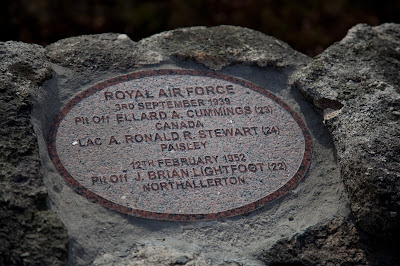The Michelin Guide to Ypres - by Duncan Harley
In the aftermath of the 1914-18 conflict, large swathes of
Europe lay in ruins and the detritus of war littered the fields of France and
Belgium. There was no longer much demand for tin helmets or barbed wire but
battlefield tourism became popular just as it had after Waterloo and Culloden.
Early visitors to the likes of Waterloo and Culloden were of course after second hand memories - photography had not yet been invented but battlefield tourists included Lord Byron, Sir
Walter Scott and Victor Hugo who no doubt visited in hope of inspiration for
their drawing or writing.
Even Thomas Hardy got in in the act.
In a more modern day, folk buy guided tours to the D-Day beaches and gloat upon Hitler's west-wall and those preserved Berlin ruins.
I came across The Michelin Guide to Ypres recently. It’s just one of a series published by the tyre company just a year after cessation of hostilities. A friend has an original copy dating from not long after the conflict. Published in 1919 and dedicated ‘In Memory of the Michelin workmen and employees who died gloriously for their country” it makes interesting reading. In fact, I must give it back lest it becomes yet one more borrowed book destined to remain on my guilty shelves forever.
Even Thomas Hardy got in in the act.
In a more modern day, folk buy guided tours to the D-Day beaches and gloat upon Hitler's west-wall and those preserved Berlin ruins.
I came across The Michelin Guide to Ypres recently. It’s just one of a series published by the tyre company just a year after cessation of hostilities. A friend has an original copy dating from not long after the conflict. Published in 1919 and dedicated ‘In Memory of the Michelin workmen and employees who died gloriously for their country” it makes interesting reading. In fact, I must give it back lest it becomes yet one more borrowed book destined to remain on my guilty shelves forever.
The guide takes the form of a road trip around the
battlefield.
Alongside route maps, images of destroyed tanks and mileage charts, the text describes the course of the various battles and highlights locations where attacks and counter-attacks took place alongside images of carnage.
Alongside route maps, images of destroyed tanks and mileage charts, the text describes the course of the various battles and highlights locations where attacks and counter-attacks took place alongside images of carnage.
Landscapes strewn with crosses
inhabit this guide alongside essential information such as “Beyond Ginchy, the road is made of logs for several kilometres … on
the left there are the ruins of a large sugar factory … cross through the
village and notice the large number of graves to the right and to the left … before
reaching Pozieres on the N.29 the road passes over Hill 160. The windmill which
formerly stood there has disappeared due to intense shelling. At the next road junction there is a destroyed tank and some crosses."
There are of course legitimate reasons for war tourism. A lost comrade or family member surely head the list. And, of course ex-soldiers such as Montrose sculptor William Lamb were drawn back to the places of conflict to placate the demons of the past.
But in truth the glorification of Ypres by a tyre company
seems at best a sad reflection on the state of human kind.
Duncan Harley is
author of The A-Z of Curious Aberdeenshire and The Little History of Aberdeenshire. Both titles are available from Amazon.











Comments
Post a Comment